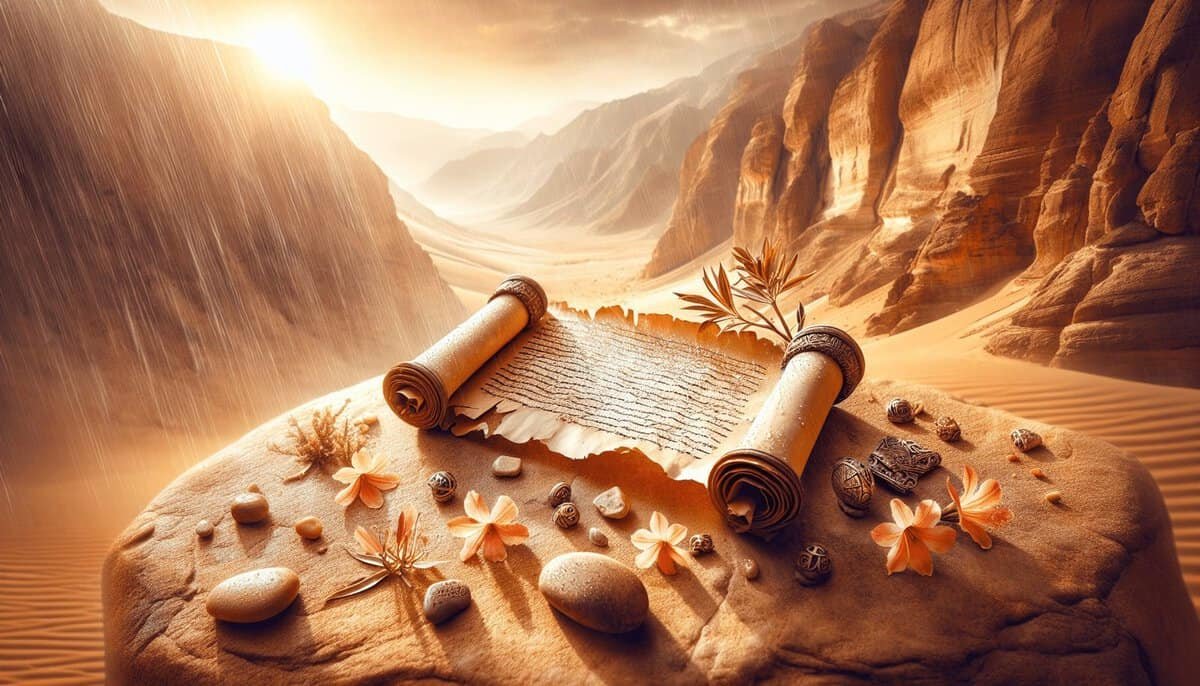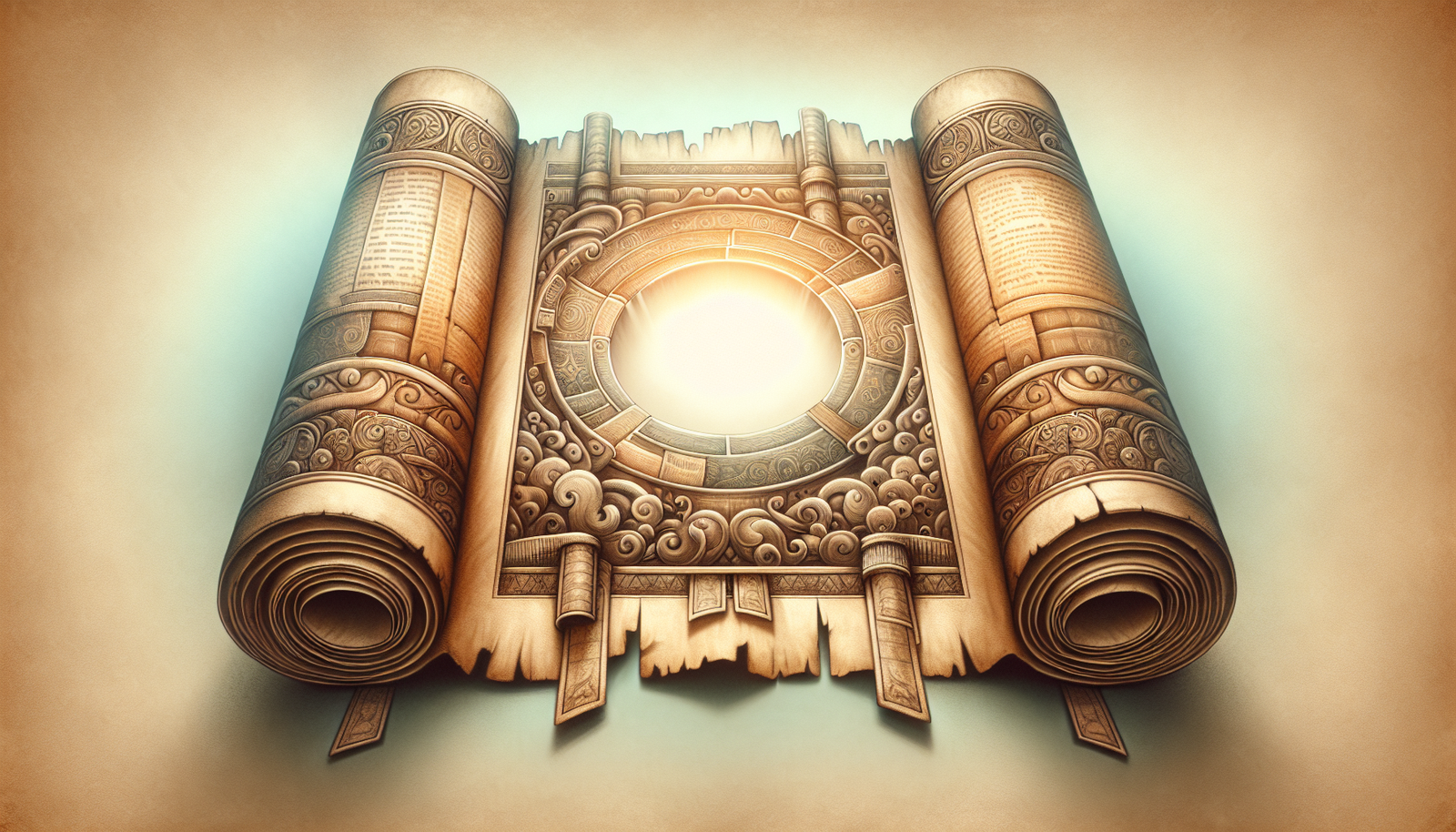What if the whispers of the past could answer your deepest questions? Imagine standing in a stark, sun-kissed landscape, surrounded by the remnants of ancient civilizations that flourished against the odds. This isn’t just a fantasy; it’s the reality of Ein Gedi, nestled along the shores of the Dead Sea, where fragile scrolls of history and the echoes of hopeful laments intertwine in a tale that spans millennia.

The Allure of Ein Gedi
Ein Gedi, a lush oasis amidst the arid desert of Judea, has long captivated the imagination of those who seek to understand the biblical narratives of survival, resilience, and spiritual depth. As you stroll through the ancient ruins, you can almost feel the presence of those who walked these paths thousands of years ago. The tranquil waters of the springs seem to sing a song of hope and renewal, inviting you to explore the stories that hide within the shadows of its cliffs and caves.
A Brief Historical Overview
Dating back to the biblical era, Ein Gedi was not just a retreat but a vital settlement. Its springs provided fresh water to inhabitants and travelers, making it a critical stop for those journeying through the harsh desert. Archaeological evidence suggests that this site was occupied from the Chalcolithic period through to the Byzantine era, highlighting its enduring significance.
With its unique geographical position, Ein Gedi acted as a commercial crossroads and a refuge for those escaping turmoil. King David is famously known to have taken shelter in the caves of Ein Gedi while fleeing from King Saul, a story that adds a layer of drama and intrigue to this already fascinating location.
The Dead Sea Scrolls: A Treasure Trove of Knowledge
When discussing Ein Gedi, one cannot overlook the significance of the Dead Sea Scrolls. Discovered between 1946 and 1956 in the nearby Qumran caves, these ancient manuscripts have transformed the landscape of biblical archaeology.
What Are the Dead Sea Scrolls?
The Scrolls consist of a collection of over 900 texts, dating from 150 BCE to 70 CE. They include biblical texts, Apocryphal writings, and sectarian manuscripts that provide insights into the religious and cultural practices of the time. Their discovery shed light on early Judaism and the origins of Christianity, making them invaluable to scholars and enthusiasts alike.
Significance of the Scrolls
The Dead Sea Scrolls are not merely historical artifacts; they represent a dialogue between past and present. They offer profound theological insights while addressing questions of identity, faith, and community. For many, the Scrolls serve as a testament to the endurance of spiritual texts amidst the tribulations of history.

The Fragility of History
As much as you might wish to hold the scrolls and absorb their wisdom, it’s essential to recognize their vulnerability. The delicate parchment and papyrus are reminders of how fragile our connection to the past can be.
Preservation Challenges
The preservation of ancient texts is a daunting task. Several factors contribute to their deterioration:
Environmental Conditions: The low humidity of the caves where the Scrolls were found helped preserve them for centuries, but exposure to light, temperature fluctuations, and pollutants pose ongoing risks.
Physical Stress: Even slight handling or movement can damage these fragile manuscripts, making it imperative to store them in controlled conditions.
Technological Advances: New technologies in digitization and restoration are crucial for the survival of these texts, allowing broader access while minimizing physical handling.
The Ethical Dilemma
As you ponder the fragility of history, ethical questions arise. Should ancient artifacts remain under lock and key in museums, or should they be shared with the world? Balancing preservation with accessibility is an ongoing debate in the field of archaeology. The delicate nature of these scrolls adds urgency to this dialogue.
Hopeful Laments: The Voice of the Marginalized
While the Silent Scrolls tell us narratives of ancient heroes and laws, they also echo the pleadings of the marginalized—those voicing doubts and dreams amidst despair.
The Role of Lament in Ancient Texts
Lamentations, a series of biblical poems, articulates profound sorrow and longing—themes that resonate with many readers today. The sorrow depicted in these ancient texts can be linked to the struggle for identity and the human experience of loss and hope.
- Personal Connections: You might find yourself reflecting on your own experiences when reading these passages. The emotions expressed are often timeless, transcending the centuries to touch your heart today.
Cultural Resonance
Lamentation is not an isolated theme in scripture. Across cultures and histories, lament has served as a tool for expression and catharsis. For instance, in various traditions, dirges and mourning songs give voice to collective suffering while also providing a pathway to healing.
This interplay of frailty, fear, and resilience shines through the lens of the Dead Sea Scrolls, underscoring the importance of documenting those who have felt sidelined by history.
Untold Stories: Archaeological Discoveries
It’s thrilling to consider how each archaeological find adds a new chapter to the story of Ein Gedi and the surrounding region. As excavations continue, fresh layers of history emerge, helping to fill the gaps left by previous generations.
Recent Discoveries
Numerous archaeological endeavors have unearthed incredible findings in and around Ein Gedi. Each piece not only helps historians understand the daily lives of the past but also contributes to a richer narrative that spans different cultures:
Ancient Synagogues: The remains of ancient synagogues found nearby reveal much about the worship practices and community life during the Second Temple period.
Artifacts and Pottery: Everyday items like pottery vessels, oil lamps, and coins provide insights into the trade routes and economic conditions experienced by the inhabitants.
The Contextual Relevance
These archaeological discoveries contribute significantly to our understanding of the religious transitions that shaped the region. They bridge the gap between the scrolls and everyday life, allowing you to appreciate how ancient texts influenced lives in tangible ways.
The Interplay of Text and Place
Think of the synergy between the fragile scrolls and the hopeful laments you’ve encountered. There’s a profound connection between the location of Ein Gedi and the texts that have survived. They serve not only as historical documents but also as reminders of faith and persistence in the face of adversity.
Literary Interpretation
As you immerse yourself in the writings of Lamentations or the storytelling in the Scrolls, consider the geographical and cultural settings that influenced these works. The harsh realities of desert life, juxtaposed with the beauty of the oases, reflect the contrasts present in human existence.
Desolation and Restoration: Just as the desert can appear lifeless, it is also capable of extraordinary beauty—much like the human soul.
Faith and Doubt: The interplay between faith and despair resonates throughout the texts, mirroring life’s duality.
Spiritual Resonance
For many, engaging with these scrolls and texts can evoke a deep spiritual reflection. It’s easy to see how ancient words can remain powerful and relevant. The hopes, dreams, and laments recorded in these writings can reach out to you, providing solace and understanding through shared human experiences.
Contextualizing Ancient Wisdom in Modern Times
Despite the distance of time and circumstance, the lessons from Ein Gedi and the Dead Sea Scrolls can guide you through your modern life. The interplay of spirituality, history, and personal narrative reflects a collective yearning that transcends the ages.
Lessons of Resilience
Consider how the stories of survival in a harsh desert can speak to your own struggles. The themes of resilience, faith, and hope found in both the scrolls and the laments can resonate deeply with the challenges individuals face today:
Finding Strength: Just as the ancient communities found ways to thrive in arid conditions, you too can draw on your inner strength to navigate contemporary challenges.
Community Support: The communal aspect of lamentation demonstrates the importance of seeking support during difficult times. Engaging with others fosters a sense of belonging, no matter the era.
Spiritual Reflection
Reading ancient texts can cultivate a deep sense of spiritual connection, urging you to reflect on values and beliefs that guide you, even when the world feels chaotic. This reflection can remind you that you’re not alone in your journey.
Conclusion: A Reflection on Past and Present
Like the deserts of Ein Gedi that bloom after rare rains, the fragile scrolls and hopeful laments speak to an inherent human capacity for growth and renewal. You can appreciate the wisdom distilled from their ancient struggles and celebrate their relevance in today’s world.
Engaging with the stories of the past can illuminate your understanding of your life, encouraging you to embrace your narratives while recognizing the interconnectedness of all human experiences. The dance of history and hope, much like the interplay of fragile scrolls and fervent laments, invites you to weave your own tale into the grand tapestry of existence.
While the sands of time may obscure some details, the essence of these ancient writings endures—reminding you that amidst the vast desert of uncertainty, there exists a fountain of hope waiting to be discovered. Through the lens of Ein Gedi, may you find renewed inspiration in your own journey, carrying forward the legacy of those who came before you.



